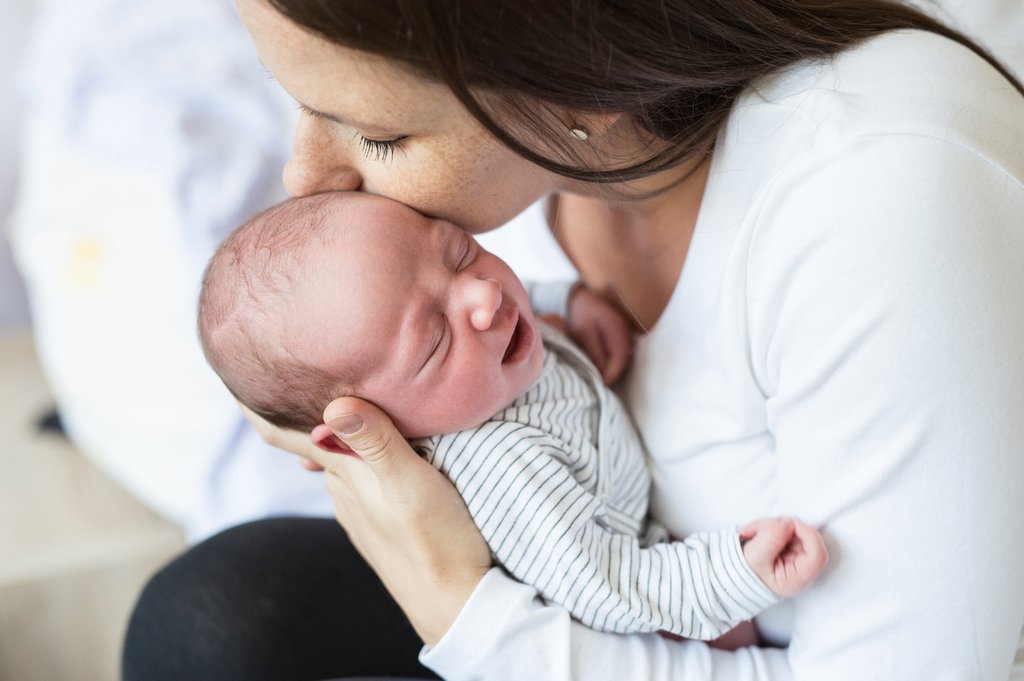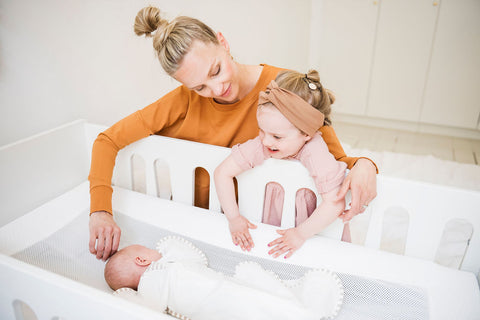When my child had infantile colic, I googled all the pages about colic and other reasons for crying. I wanted to know why my baby was crying and if there was something I could do to help her feel better. However, I didn’t find any article which told what the difference is between colic, reflux and flatulence and how I distinguish them.
After I started working with the LullaMe self-rocking baby mattress, my knowledge of all the different challenges with baby sleep increased. So here it is – you’re welcome: the signs and symptoms of colic, reflux, flatulence, and allergies and how you can help your baby.
Baby colic
Signs of colic
If your baby is colicky, the crying usually occurs at the same time each day, especially in the evening. Crying is very loud and inconsolable and it’s hard to make your baby stop crying. The colic shows up usually three weeks after the birth and the fussy phase last approximately 3-4 months.
The term colicky applies babies, who cry at least three hours a day for more than three weeks.
What to do?
At the moment there is no cure for colic. Even though there are many alternative treatments you can try to help your baby feeling better, but the real colic won’t go away. Usually the best way is to forget all the tricks and only focus on that how your family will survive the fussy phase so that the whole family would remain sane.
If you think that your baby is crying because of the colic and not for example because of flatulence, reflux, allergy, or the lack of the regular daily rhythm. Sometimes over-tired and fussy babies are diagnosed incorrectly with colic.
It’s good for colicky babies, that the parent will recognize the symptoms of tiredness and put the baby to sleep in time, whenever possible.
Read my story how I survived my baby’s colic here.
Flatulence in babies
Signs of flatulence
Gassy babies usually try to pull their legs up on their chest. They can roll their eyes and squirm due to the bubbles. Gassy babies’ crying is usually intermittent. Babies with gassy tummy may look like they are gasping or like they are just about to burb. Between crying the baby may look like having smile on his/her face. Sometimes gassy baby’s smile is first thought to be intentional.
Crying related to flatulence is irregular and happens at any time during the day.
What to do?
In order to help your gassy baby, you have to coax the gas out. When your baby is burping you can gently rub your baby’s left side of the tummy with a circular motion. You can also lift your baby up so that his/her hands are over your shoulders and the legs are directly down. This makes a small pressure to the baby’s tummy and may help to get the bubbles out.
You can also pat your baby’s but gently or massage his/her back from down to up like you were covering the school book and trying to get the bubble out from the contact plastic.
Also try to put your gassy baby on his/her back and roll the legs in a bicycle motion. All kinds of gently pressure on the baby’s tummy may help. Be careful that the pressure isn’t in any case too hard, so that you won’t damage the baby’s entrails.
Some of the babies are swallowing air while eating. If your breasts are spaying milk, you can try to breastfeed from the same breast for a couple of hours or relieve the pressure on your breasts before you nurse your baby. If your bottle feeding your baby, put the slowest flow nipple to the bottle. this will help to ensure that your baby doesn’t drink milk too fast.
Also burping your baby with care is important!
Reflux in babies
Signs of reflux
When babies have reflux (full medical term is gastro-oesophageal reflux or GOR), they have challenges with eating. They might cough and gag in the middle of eating due to the poor closure of the lower esophageal sphincter. Sometimes babies with reflux can spit up or vomit after eating.
Reflux may cause difficulties in burping your baby.
Babies with reflux like to be in upright position. Putting the baby in prone position makes the baby cry, because the food is coming easily back up and causes burning feeling in the baby’s throat.
Crying and fussing can cause that even more stomach's contents will come back up into the esophagus. The more your baby cries, the more burning sensation your baby feels. And the more burning sensation your baby feels, the more your baby cries.
Reflux don’t always cause vomiting or swallowing. When there are only little stomach's contents coming back up, you are not able to swallow them.
You can get more information about reflux in babies here.
What to do?
You must soothe your baby with reflux a little bit different than a gassy baby. You should avoid everything that causes more symptoms of reflux.
Never ever pat your baby’s but or massage his/her tummy like you would do with gassy baby. That will cause that more stomach contents come back up into the esophagus and then your baby will start crying.
Keep your baby in upright position as much as possible. Try positioning your baby also in upright position when you are breastfeeding. You can also raise the end of the nursing table, so your baby won’t lay in prone position.
Many babies with reflux are comfort eaters. Eating food will ease the discomfort for a moment. Continuously eating should be avoided, because it will make the symptoms of both reflux and flatulence worse. Eating should happen at regular intervals (with a newborn baby in every three hours) and the pacifier will comfort your baby between the feedings.
Many babies with will soothe in a car seat, in a colic swing or on the Lullame self-rocking mattress. However, the rocking should be minimal and fast movements should be avoided.
Allergies in babies
Symptoms of allergies
Baby allergy may manifest itself either right after eating or even many hours or days after the food is eaten.
Baby allergies may cause skin symptoms (60% of allergic babies), gastrointestinal symptoms (30% of allergic babies) or respiratory symptoms (10% of allergic babies).
The typical skin symptoms are red rash on the baby’s but, face flushing and eczema. Gastrointestinal symptoms include diarrhea, regurgitation, and a lack of weight gain. Respiratory symptoms include rhinitis, nasal discharge and even asthma.
Some of the symptoms of baby allergies such as upset stomach or regurgitation can be similar to symptoms in flatulence or reflux. Therefore, it isn’t always easy to distinguish them. The most common symptoms in allergies are especially cutaneous symptoms, diarrhea, and respiratory symptoms. However, all children don’t have always the symptoms mentioned above.
What to do?
It’s time to see a doctor if you think that your baby has some allergy. Diagnosing allergies is a complex and time-consuming process. Infants will have skin tests and blood tests. Your baby will also have a diet in which you add one food at a time that has the allergen which you think may be the cause for your baby’s symptoms. The most common food allergies, during the breastfeeding, are milk and eggs.
This blogpost has written by Hanna Sissala, who is mom for two and the inventor of the Lullame self-rocking baby mattress.
Source: Tracy Hogg. Secrets of the Baby Whisperer. 2002





Leave a comment: